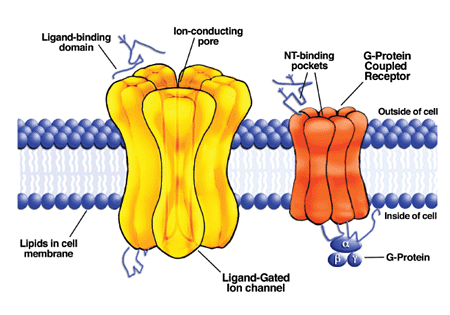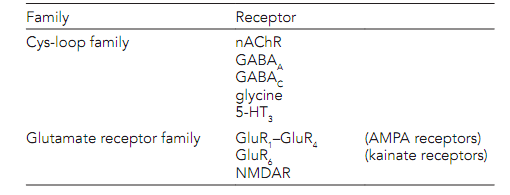Ligand-gated ion channel receptors
The Ligand-gated ion channels (i.e., LGICs) are one kind of ionotropic receptor or channel- linked receptor. They are a collection of transmembrane ion channels which are opened or closed in response to the binding of a chemical messenger that is a ligand, like a neurotransmitter.
The Ligand-gated ion channels are also a big group of intrinsic transmembrane proteins which permit passage of ions upon activation by a particular chemical. Mainly endogenous ligands bind to a site is different from the ion conduction pore and binding directly causes opening or closing of the channel. The Ligands can bind extracellularly, example glutamate, ACh and GABA, or intracellularly, example. Ca2+ on Ca2+-activated potassium channels. It is significant to note that the ligand itself is not transported across the membrane. The Ligand binding causes a drastic change in the permeability of the channel to a particular ion or ions; effectively no ions can pass throughout the channel whenever it is inactive but up to 107 ions per second can be permitted through the ligand binding.

The receptor that is nicotinic acetylcholine is a prototypic ligand-gated cation-selective ion channel and the accessibility of high affinity antagonists, the alpha-neurotoxins, has very much facilitated the biochemical and molecular characterization of the receptor/channel complex.
Most of the ligand-gated ion channel (i.e., ionotropic) receptors are the members of two families which is as shown in table below, the cys-loop family (consists of the nicotinic cholinergic, GABAA, glycine, and 5-hydroxytryptamine (5-HT3) receptors), and the ionotropic glutamate receptor family.
